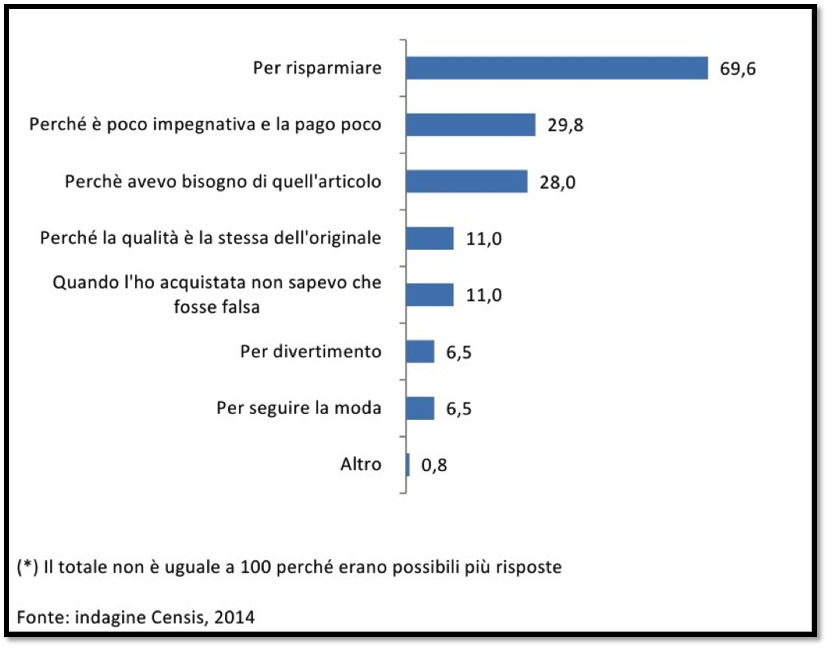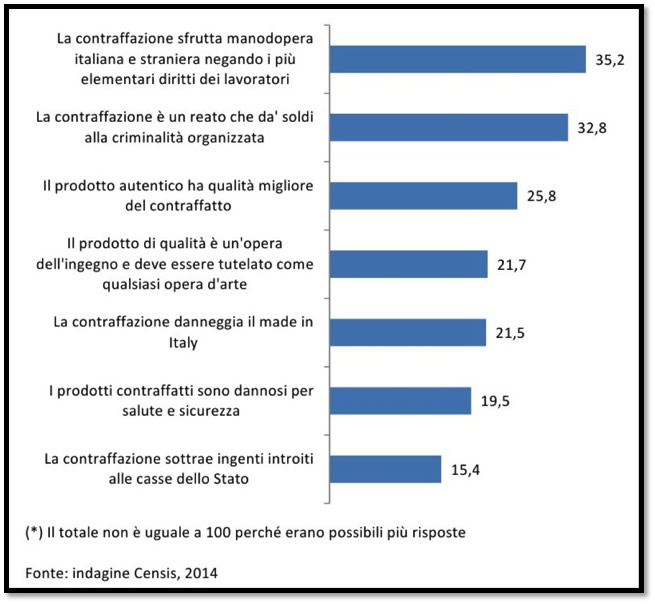
22 Dec Fashion Law: Counterfeiting and young people.
While repression is undoubtedly important to oppose the counterfeiting industry, there should also be campaigns to provide information and raise awareness in order to warn the general public, and especially younger generations, about the risks of buying counterfeit goods.
Re-education is indeed fundamental and irreplaceable in order to fight a phenomenon with both a social and economic reach.
A study by CENSIS has tackled this profile and, in partnership with UIBM, it has focused its attention on the relationship between young people and counterfeiting, interviewing the younger generation in Rome’s celebrated markets.
The report highlighted that this is a usual practice for 74.6% of young people, who buy counterfeit goods often (15.2%) or sometimes (59.4%). Moreover, many young people perceive the phenomenon to be socially accepted, without consequences and practised by everyone; a phenomenon that is light on people’s consciences and, above all, on their wallet.
Reasons that tempt the young people interviewed to buy counterfeit goods* (Val. %)

While savings are the main reason (69.6%) for purchasing a counterfeit item, the places where this occurs are those “traditionally” associated with this practice: stalls (81.2%), markets (48.0%) and the beach (32.7%), while the internet is still lagging behind (16.6%), but on the increase.
An interesting field is that relating to anti-counterfeiting campaigns designed to raise awareness: most young people think that we should insist on the relationship between organised crime and counterfeiting (32.8%) and, above all, on the work exploitation that this activity implies (35.2%).
Topics considered effective for an information campaign aimed at young people on counterfeiting* (Val. %)

These are the arguments that stir the consciences of the young, especially the possibility that counterfeit goods are produced in the absence of worker’s rights and exploitation associated with illegal immigration.
Counterfeiting and culture of legality.
The alarming fact that strongly emerges from the analysis of this phenomenon is related to the general view that “normal” citizens have of counterfeiting: an activity, which, although illegal, is still in the “noble” circle of the fight against the high prices of big brands and the humorous challenge to big manufacturers.
We therefore need to encourage a deeper reflection, free from ignorant and provincial reasoning against the system, one that draws the community’s attention to the damage that this phenomenon causes to all economic players, from manufacturers to consumers and society as a whole.
Upon closer examination, the negative effects of the counterfeiting industry are numerous and affect different interests, both public and private.
Indeed, “counterfeiting” has caused:
- economic damage to businesses, resulting in lost sales, a lower turnover, loss in terms of image and credibility, considerable costs incurred for the protection of industrial property rights to the detriment of investments and manufacturing initiatives;
- damage and/or a danger to the end consumer, associated with the intrinsic safety of products, especially in the pharmaceuticals, automotive and food industry sectors. Indeed, counterfeiting misleads the consumers as the typical function of the brand, that is to guarantee the commercial origin of the products, is undermined;
- social damage, deriving from the exploitation of vulnerable people (unemployed or mostly non-EU citizens) recruited through a real black labour racket, without paying pension contributions and without insurance coverage and the resulting loss of jobs;
- damage to the Public Treasury, by not paying VAT and income tax. Indeed, counterfeit products are traded through a circuit running parallel to that traditionally used, without paying direct and indirect taxes;
- damage to the market consisting in the alteration of how it works with unfair competition based on lower production costs.
- a persistent risk to public order, determined by the re-investment of the huge profits generated by this illegal activity in equally profitable criminal activities (building, drugs, weapons) by criminal organisations. Indeed, only a small portion of the profit goes to the final link in the chain, consisting mainly of non-EU citizens. Most of the revenue instead falls into the hands of criminal associations behind the large-scale trafficking of counterfeit goods.
Bibliography and Websites:
http://www.indicam.it/
http://www.uibm.gov.it
http://www.uibm.gov.it/iperico
https://siac.gdf.it/



No Comments